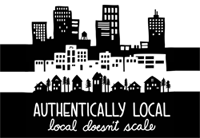Safety Girl reads the weather reports, too, and she has some snow tips for the neighborhood.
________________________
A few inches of snow is no big deal in other parts of the country, but we’ve already been reminded this season that Seattle can grind to a halt under anything more than a light dusting. Here is a quick refresh before the snow flies:
- Run errands early
- Stay aware of changing weather conditions
- Prevent slip-and-falls
- Don’t let your pipes freeze
- Be careful on the roads
Run errands early
Don’t wait until the snow is falling before you head out for supplies. Make a pit stop at the grocery or hardware store for any snow supplies you may need. Pick up enough groceries for the duration of the storm, so you won’t be forced to venture out in bad weather. Remember things like a bag of rock salt for the front steps, cat litter or traction grit to keep in your car, and fresh batteries for flashlights in case the power goes out.
Stay aware of changing weather conditions
Snow and storm forecasting is more reliable than it used to be, but still no sure thing. If you’re headed to work or a social event near the time a storm is predicted, keep an eye outside and don’t be afraid to leave if the weather starts to take a turn for the worse.
It’s also best, if you can, to head for home around sunset. Outdoor temperatures drop—and ice forms much more quickly—soon after dark.
Prevent slip-and-falls
When you go out, wear shoes with good tread and try to avoid carrying heavy loads (another reason to grocery shop beforehand). Slips are a frequent cause of injuries during the winter months, and a sprained wrist or broken tailbone can really ruin your month.
When you have an outside entrance to your home, it’s important to shovel and salt your porch steps and your front walk so you or your visitors don’t fall. This is more common several days into a storm, when old snowy footprints turn into uneven ice. Spread rock salt every day, shoveling beforehand if necessary.
Don’t let your pipes freeze
Homedwellers- if the temperature drops below freezing, take precautions to avoid broken pipes. Letting faucets run a slight trickle of water overnight can prevent freezing and bursting. If you’re concerned about water waste, put large containers underneath the faucets, and use the water the following day.
If you own your home or townhouse, you may want to check out more detailed information about insulating your plumbing and preventing frozen pipes.
Be careful on the roads
If you’re not confident in your ability to drive in the snow, or if your vehicle is not prepared for snowy conditions, it’s best to stay home or take the Metro. In the last snow post we covered making a storm kit, chaining your car, and steering out of a skid.
And remember, 4WD does not improve your braking:
httpv://www.youtube.com/watch?v=dooKpdIwwR4&feature=youtu.be









Stay Connected